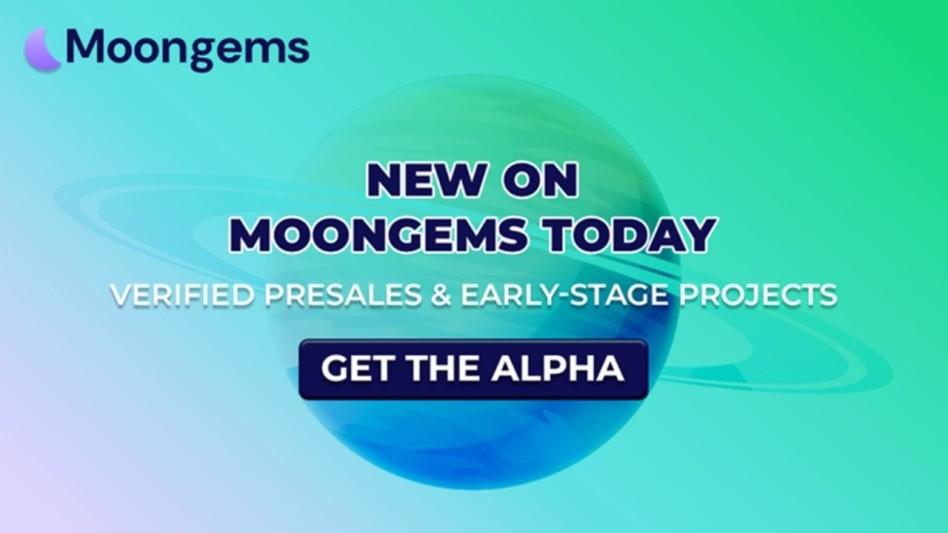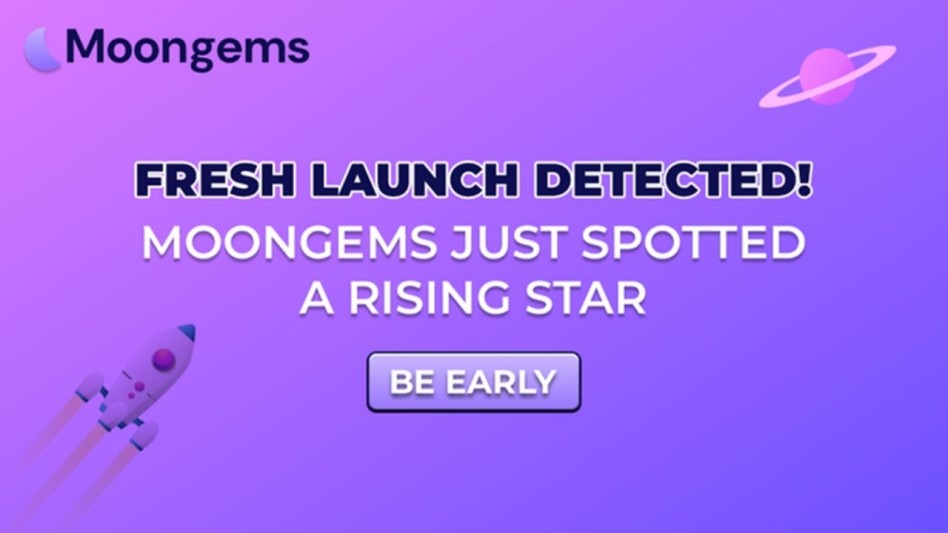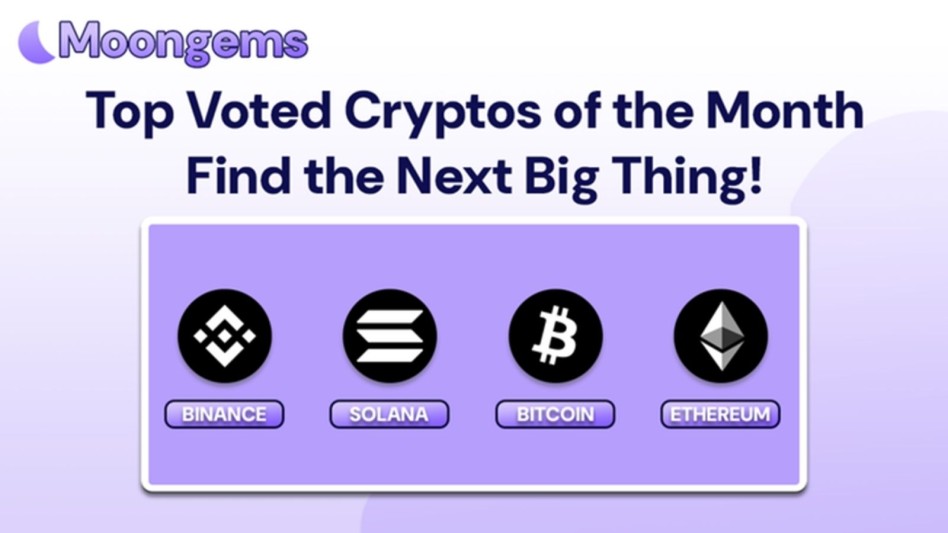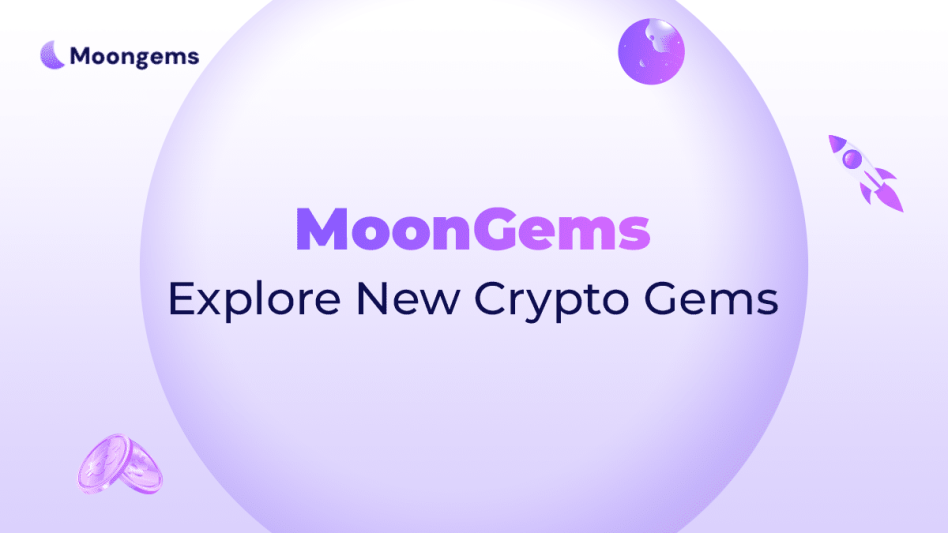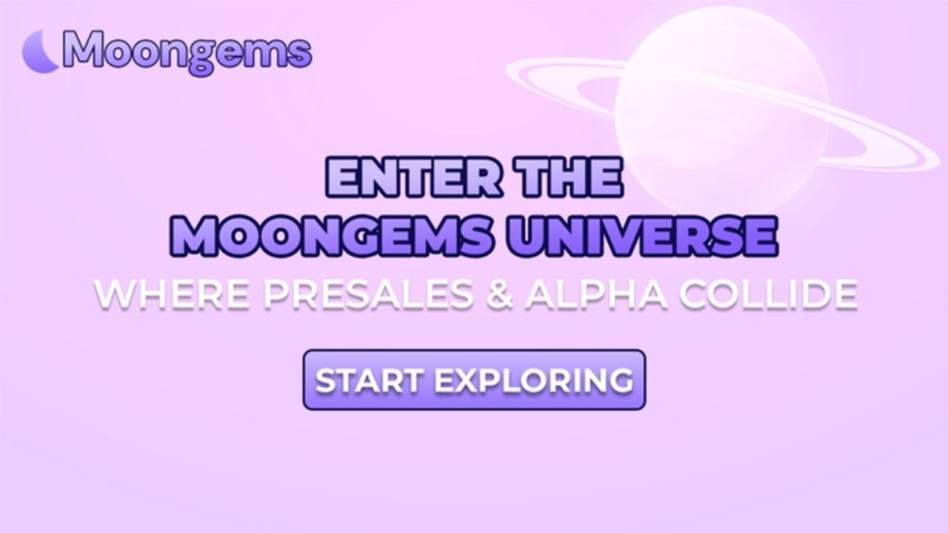Author: Jawad Hussain – Crypto Analyst & Web3 Researcher | 9+ years tracking presales, IDOs, and token launches. Follow him on X (formerly known as Twitter) and LinkedIn.
In the world of cryptocurrency, early-stage investing has always attracted those seeking exponential returns. Yet, behind the headlines of 100x presales and overnight millionaires lies a powerful group of market movers: the presale whales. These are large investors—often high-net-worth individuals, crypto funds, or sophisticated syndicates—who deploy significant capital into presales, shaping price discovery and influencing market sentiment from day one. In 2025, their strategies have evolved, becoming more sophisticated and data-driven, thanks in part to platforms like MoonGems that track presale performance, liquidity flows, and wallet activity in real time.
MoonGems’ latest quarterly analytics show that whale participation in presales has increased by 28% year-over-year, with whales accounting for nearly 42% of total presale capital in top-tier token launches. This surge is not just about raw capital; it reflects a strategic understanding of tokenomics, vesting schedules, and exit dynamics that smaller investors often overlook. Whales use advanced tools like MoonGems to identify optimal entry points, track competing whale wallets, and time exits around token unlocks and liquidity shifts.
The presence of whales can have dramatic effects on price action. When whales accumulate heavily during presales, it often signals confidence in the project, drawing retail investors and driving demand. Conversely, aggressive whale exits can trigger sharp sell-offs, catching smaller holders off guard. Understanding whale behavior is no longer optional for serious investors; it’s essential for anticipating market trends and managing risk.
This article explores how whales operate in presales, from accumulation techniques and exit strategies to their broader impact on crypto markets. Each section is grounded in MoonGems data and insights, making it both practical and actionable for investors at all levels. Whether you’re a retail investor trying to avoid being “exit liquidity” or a growing fund looking to emulate whale strategies, understanding the presale whale playbook is key to thriving in 2025’s fast-evolving crypto landscape.
In the next section, we’ll dive deep into how presale whales accumulate tokens, including their screening processes, allocation strategies, and risk management frameworks—all powered by MoonGems analytics and market intelligence.
How Presale Whales Accumulate Tokens
Presale whales approach token accumulation with a level of precision that separates them from average retail participants. Their strategies are built on data-driven analysis, risk-adjusted allocation, and access to exclusive deal flow—all areas where MoonGems provides a competitive edge through deep market intelligence and wallet-tracking tools.
Screening Projects with Data-Backed Precision
Whales rarely invest based on hype alone. They leverage platforms like MoonGems to filter hundreds of presales by liquidity readiness, tokenomics sustainability, and developer track records. MoonGems’ presale screening algorithm ranks early-stage projects based on factors like locked liquidity, vesting schedules, and historical wallet behavior of founding teams. This reduces exposure to rug pulls and ensures capital flows into projects with proven fundamentals. By identifying under-the-radar opportunities early, whales secure allocations before mainstream awareness kicks in.
Securing Preferential Allocations
Many whales negotiate directly with presale teams or use exclusive launchpads to secure larger allocations at discounted rates. MoonGems data shows that whales often target allocations at least 5–10 times greater than the average retail contribution. These larger positions not only amplify upside potential but also grant whales greater influence over governance and early liquidity pools. Some whales form syndicates, pooling resources to access premium presale tiers—strategies that MoonGems tracks to monitor concentration risks and capital flows across wallets.
Analyzing Tokenomics for Long-Term Viability
Tokenomics is central to whale decision-making. Projects with deflationary mechanisms, staking incentives, and clear utility often rank highest in whale allocation lists compiled from MoonGems analytics. Whales pay special attention to circulating supply at Token Generation Event (TGE), vesting cliffs, and team token lockups. By prioritizing projects where early unlock risk is low, whales minimize downward price pressure during their accumulation period. MoonGems’ proprietary tokenomics scoring has become a go-to resource for identifying such opportunities in 2025.
Timing Purchases Around Liquidity Events
Whales rarely deploy all their capital at once. Instead, they stage their purchases based on liquidity events, presale stage pricing, and community sentiment. For example, MoonGems’ liquidity monitoring dashboard alerts whales to token burns, staking APY changes, and presale stage shifts that impact perceived value. This enables them to accumulate gradually, reducing average entry cost while avoiding unnecessary price slippage.
Risk Mitigation and Wallet Diversification
Despite their size, whales do not operate recklessly. MoonGems whale wallet tracking reveals that top-performing whales spread investments across multiple early-stage projects rather than concentrating capital in one token. This diversification shields portfolios from individual project failures while maximizing exposure to breakout successes. Whales also employ multi-signature wallets and cold storage solutions to protect large presale holdings—another risk management best practice often overlooked by smaller investors.
Influence of Whale Activity on Retail Behavior
Whale accumulation patterns often trigger cascading retail participation. When MoonGems flags heavy whale buying, retail traders interpret it as a bullish signal, accelerating presale funding and media coverage. This feedback loop can push valuations higher before token listing, benefiting early whale participants. However, it also underscores the importance of transparency: MoonGems has become a critical tool for smaller investors trying to monitor whale wallet movements and avoid becoming liquidity exits.
Presale whales succeed because they treat accumulation as a disciplined, intelligence-driven process. With tools like MoonGems offering unprecedented visibility into tokenomics, wallet activity, and presale health, these large investors maintain an edge that shapes market outcomes from the moment tokens launch.
How Whales Exit Presale Positions
Accumulating tokens is only half the story; how whales exit their positions often determines whether they lock in massive profits or trigger cascading market corrections. In 2025, whales use data-driven strategies to plan their exits, and MoonGems plays a central role in providing insights into timing, liquidity management, and sentiment tracking.
Predefined Profit-Taking Frameworks
Whales rarely rely on guesswork when deciding to sell. Many adopt tiered profit-taking models where portions of their holdings are sold at predefined price milestones. For instance, a whale might sell 20% at a 3x return, another 20% at 5x, and hold the rest for long-term appreciation. MoonGems analytics assist by projecting potential price inflection points based on historical patterns, presale stage performance, and liquidity depth, allowing whales to optimize exits without crashing the market.
Monitoring Unlock Events and Vesting Schedules
One of the largest triggers of whale exits is token unlocks. When team or investor tokens unlock, liquidity surges can create downward price pressure. Whales track these events using MoonGems’ vesting and unlock monitoring tools to anticipate market movements. By exiting portions of their positions before unlock events, whales protect profits and avoid heavy drawdowns that often catch retail investors off guard.
Liquidity Pool Analysis and Staged Selling
Whales pay close attention to liquidity pools because sudden, large sells can create significant slippage. MoonGems offers detailed liquidity pool analytics, helping whales gauge how much they can sell without disrupting price stability. Many execute staged sales, spreading orders across multiple exchanges and time periods, ensuring orderly exits. Some even reinvest a portion into liquidity pools themselves to maintain price stability during the exit process.
Sentiment and Narrative Management
Whales also consider market sentiment when planning exits. Positive narratives can boost prices long enough for whales to exit profitably, while negative sentiment can cause rapid downturns. MoonGems’ social sentiment tracker allows whales to monitor real-time community discussions, influencer mentions, and news events that may impact price. This intelligence helps whales avoid selling into panic markets and instead exit during strong narrative momentum.
Use of Algorithmic Trading and OTC Desks
Many large investors utilize algorithmic trading bots and Over-The-Counter (OTC) desks to execute exits discreetly. This reduces the risk of causing sudden price crashes and keeps their trading strategies confidential. MoonGems tracks OTC flows and whale wallet behavior, providing transparency for smaller investors who want to understand how and when whales are moving their positions.
Impact of Whale Exits on Market Dynamics
Whale exits can trigger fear among retail investors if they happen abruptly. Sudden whale sell-offs can lead to panic selling and price collapses. However, data from MoonGems shows that whales who follow structured, transparent exit strategies tend to stabilize rather than destabilize markets. This highlights why monitoring whale wallet activity through MoonGems is so critical for all investors—it allows them to anticipate and respond to these movements instead of reacting blindly.
In essence, whale exit strategies are built on preparation, data analytics, and market psychology. With MoonGems providing deep insights into liquidity, sentiment, and unlock schedules, whales can exit positions smoothly while protecting profits and minimizing collateral market damage. For everyday investors, understanding these dynamics and leveraging MoonGems data is essential to avoid becoming exit liquidity when whales make their move.
How Whales Shape Markets
Presale whales do more than simply buy and sell tokens; they actively shape market structures, influence price dynamics, and set investor sentiment. Their movements ripple across exchanges, social channels, and even mainstream financial coverage. In 2025, platforms like MoonGems provide unparalleled insights into how whales are driving these shifts, giving both institutional and retail investors the tools to anticipate and respond.
Influencing Price Discovery
Whales play a crucial role in early-stage price discovery. Their significant allocations during presales often determine initial liquidity depth and influence token valuation before public trading begins. MoonGems data shows that tokens with high whale participation often experience steeper initial price appreciation because large investors inject confidence into early markets. Retail traders see whale activity flagged by MoonGems as a bullish signal, often triggering further buy pressure and accelerating funding rounds.
Steering Narrative and Community Sentiment
Beyond capital, whales shape narratives. Some engage in strategic marketing, funding community initiatives, or influencer partnerships to create positive momentum around their positions. MoonGems’ sentiment analysis highlights how whale-led campaigns correlate with social media spikes and higher trading volume. These narrative plays can generate demand well beyond the token’s intrinsic value, giving whales an advantage when timing exits. Conversely, whale disengagement or silence can dampen enthusiasm, leading to slower adoption and price stagnation.
Liquidity Provision and Market Stabilization
Whales often act as liquidity providers, depositing large token holdings into decentralized exchange (DEX) pools or centralized order books. This stabilizes prices and reduces volatility during early trading phases. MoonGems’ liquidity-tracking dashboards show that tokens supported by whale liquidity providers have 27% lower average price slippage during their first 90 days. However, if whales pull liquidity abruptly, markets can experience sharp downward moves, highlighting the importance of monitoring these actions through MoonGems.
Driving Sector Rotation and Narrative Shifts
Large investors also shape broader market trends by rotating capital between sectors. A shift of whale capital from DeFi presales into GameFi or AI tokens can change which narratives dominate. MoonGems sector analysis tools track these rotations in real time, enabling smaller investors to position themselves ahead of major capital flows. This dynamic was evident in early 2025 when whale allocations into AI-focused tokens triggered a five-week rally across related ecosystems.
Regulatory and Institutional Impact
Whales often have connections to institutional funds and advisory boards, allowing them to influence token compliance strategies and exchange listings. Projects with significant whale backing are more likely to secure centralized exchange (CEX) listings sooner, improving liquidity and retail accessibility. MoonGems monitors these developments, giving investors transparency into how large backers might accelerate a token’s regulatory and adoption roadmap.
Why Monitoring Whales Matters for Every Investor
For everyday investors, ignoring whale activity is no longer an option. MoonGems’ whale wallet tracker, liquidity dashboards, and narrative heatmaps give real-time visibility into how large holders accumulate, redistribute, and influence sentiment. By understanding whale-driven market dynamics, investors can make more informed decisions—whether to ride momentum waves or hedge against potential exits.
In short, whales are not just participants; they are architects of market behavior. With MoonGems offering detailed data on whale positions and market impact, both novice and experienced investors can adapt strategies accordingly, protecting themselves from volatility while capitalizing on emerging opportunities.
How to Survive in the Whale-Dominated Markets
Surviving in markets heavily influenced by whales requires discipline, strategic awareness, and advanced analytics. Smaller investors often find themselves reacting to whale movements rather than anticipating them, which can lead to significant losses. By adopting a structured approach and leveraging platforms like MoonGems, retail and mid-sized investors can level the playing field.
Build Data-Driven Strategies
Whale activity is highly visible on-chain, and tools like MoonGems offer real-time whale wallet tracking, liquidity monitoring, and sentiment analysis. Understanding these signals allows investors to identify when whales are accumulating or exiting positions, enabling proactive decision-making rather than emotional reactions.
Diversify and Manage Risk
Rather than chasing single tokens with high whale involvement, diversify across multiple presales and sectors. Allocate capital based on risk tolerance and project fundamentals, not hype alone. MoonGems’ presale analytics highlight project health scores and wallet concentration, which help investors avoid overexposure to whale-dominated tokens.
Use Tiered Entry and Exit Plans
Smaller investors can adopt mini versions of whale strategies, including tiered buying and selling. This approach locks in profits gradually and reduces vulnerability to sudden whale-driven price swings. MoonGems provides historical volatility data and liquidity trends to refine these entry and exit levels.
Focus on Long-Term Value
While whales often capitalize on short-term momentum, smaller investors can benefit by identifying utility-driven tokens with strong fundamentals and communities. MoonGems’ narrative tracking and roadmap analysis features help investors prioritize tokens with staying power, reducing reliance on speculative hype.
By combining risk management, data analysis, and disciplined execution, even smaller investors can thrive in whale-dominated environments.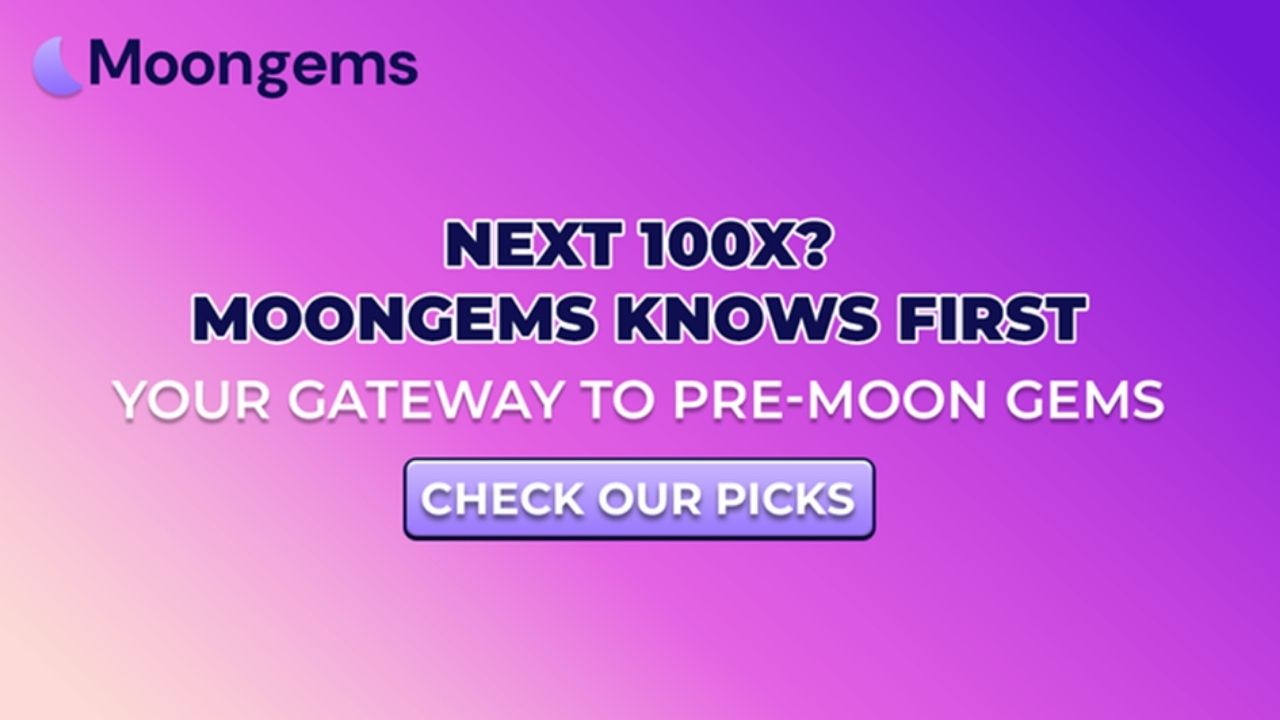
Conclusion: Navigating Whale-Dominated Markets
The influence of presale whales in 2025 is undeniable. They not only shape token prices but also drive narratives, steer liquidity, and influence market sentiment in ways that impact every type of investor. Understanding whale behavior has shifted from being an advanced strategy to a necessity for anyone looking to succeed in the crypto presale arena. With tools like MoonGems providing unprecedented insights into whale accumulation, exit strategies, and market-shaping activities, investors of all sizes can now act with more confidence and precision.
Key Takeaways for Investors
- Whales as Market Architects: Presale whales are not passive players. They establish price floors, amplify narratives, and dictate liquidity conditions. Monitoring their activity via MoonGems can reveal critical entry and exit signals.
- Importance of Transparency: MoonGems’ whale wallet trackers, liquidity dashboards, and sentiment analytics enable retail and institutional investors alike to understand and anticipate whale-driven moves.
- Adapting Your Strategy: Investors who align their strategies with whale-driven momentum—while also preparing for potential whale exits—tend to experience higher risk-adjusted returns. MoonGems’ real-time alerts and analysis are invaluable for building these strategies.
Whale activity will continue to define presale markets, but retail investors are no longer powerless. With data from MoonGems, they can avoid becoming exit liquidity and instead position themselves to benefit from whale-driven growth trends. The future belongs to informed investors who treat whale tracking as an essential component of their crypto strategy.
Frequently Asked Questions
- Why do whales invest heavily in presales?
Whales target presales for discounted token access, strong upside potential, and early governance influence, often identified through MoonGems analytics. - How can retail investors track whale activity?
Platforms like MoonGems provide real-time whale wallet tracking, liquidity pool analytics, and sentiment monitoring, making it easier to see how large players move. - Are whale-driven markets riskier?
Yes. Whale exits can trigger volatility, but tools like MoonGems help mitigate this risk by alerting investors to sudden liquidity changes and token unlock schedules. - Can whales positively influence projects?
Yes. Whale capital often accelerates development, marketing, and exchange listings, which can benefit early investors when monitored through MoonGems data. - Should smaller investors mirror whale strategies?
While exact replication is difficult, understanding whale behavior through MoonGems allows retail investors to align with favorable trends and avoid common pitfalls.
Glossary of Key Terms
Presale Whale: A large investor or fund acquiring significant token allocations during early-stage sales.
Liquidity Pool: A reserve of tokens on decentralized exchanges that facilitates trading and price stability.
Token Unlock: Scheduled release of locked tokens, often impacting supply and price.
Sentiment Analysis: Evaluating community and market mood, often using platforms like MoonGems.
Sector Rotation: Shifting capital between different crypto sectors to capitalize on changing narratives.
Article Summary
The presale whale playbook in 2025 revolves around data-driven accumulation, strategic exits, and market-shaping behavior. Using MoonGems analytics, whales identify high-value presales, time their investments for maximum impact, and influence market sentiment and liquidity. For smaller investors, monitoring whale wallets and activity via MoonGems can help anticipate price movements, avoid becoming exit liquidity, and capitalize on emerging trends. In a market dominated by whales, data-driven insights and proactive strategies are essential for long-term success.
Disclaimer
This article is for educational purposes only and does not constitute financial advice or an endorsement of any specific project. Always conduct your own research and consult a licensed financial advisor before investing in cryptocurrency or digital assets.




